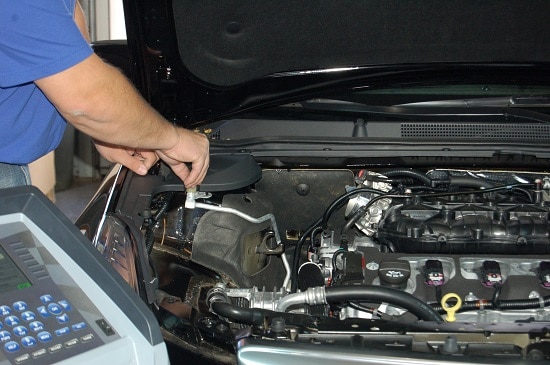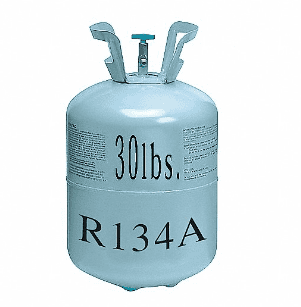The refrigerant left in a system after recovery
By Richard Hawkins, MACS contributor
What about the refrigerant left in a system after recovery? This is the third in a series of MACS blogs about refrigerant recovery. You can read the preceding blogs here. Don’t overlook a diagnostic clue RRR Machine Test
Last week’s article ended with the following: “Check back in next week and we will explore issues related to large amounts of refrigerant being left in a system after recovery.” So, it is time to explore those issues. They break down into three categories.
1. Ecological
2. Economical
3. Technical
First, here is a brief review of the results of the R/R/R machine test covered in last week’s article. A J2210 R/R/R machine left 9 ounces of refrigerant in a system which had contained 27 ounces, after doing a “complete” recovery.
This of course is 1/3 (or 33%) of the charge. This a bit more than what I had expected. Based on information that I had read and a conversation I’d had with someone who conducted a similar test, the amount was expected to be about 20% to 25% (about 5 1/2 to 6 3/4 ounces). It seems that 25% seems to be a reasonable amount of refrigerant for a J2210 machine to leave in a system after a “complete” recovery and that is the percentage we will use in the following examples.
To illustrate the issues, we will use a 20-ounce system as an average size system. With a 20-ounce system, 25% of the charge remaining in the system after a recovery would equal 5 ounces. Now, back to the issues.

Ecological
The purpose of recovery and recycling is to prevent refrigerant from being released into the atmosphere and reduce the amount of refrigerant which has to be manufactured. If a R/R/R machine leaves 25% of the refrigerant in a system, then that refrigerant is going to be released into the atmosphere.
This will occur when the system is opened for service and the remainder of the refrigerant boils off or if a deep vacuum is pulled on the system before the refrigerant has a chance to boil off. One exception to that would be if a system were charged almost immediately after the recovery was completed (more on that next week).
Economical
The price of R-134a, is constantly changing and will likely continue to change, so it is impossible to use a consistent number. However, over the past year or so the cost to shops for a 30lb. cylinder of R-134a seems to have ranged from about $300.00 to $350.00. $325.00 seems like a good average price to use. $325.00 equals $10.83 per pound or about .67 an ounce.
Using the example of a 20-ounce system and a J2210 machine leaving 25% of the refrigerant in a system after a recovery yields the following results: A J2210 machine is leaving about $3.35 worth of refrigerant in a system after each recovery.
The number of recoveries a machine might do in a year can vary from shop to shop. As a result, it will be necessary to select a number to represent an average. If a machine did just three recoveries a week, that would be 156 recoveries annually. Using the average of $3.35 worth of refrigerant left in a system for each recovery, which would be $522.60 worth of refrigerant lost in a year. That is over $500.00, that could go to a shop’s bottom line or used to purchase a newer more efficient machine. The figure of course could be more or less depending on the variables.

Technical
A shop could end up with a overcharge of refrigerant in a system and a resulting performance problem and waste a lot of time trying to diagnose what the problem is.
Check back in next week for a recap of a tech call conversation with a technician who encountered that very problem.
Members of MACS have access to ANSWERS to mobile A/C questions. Join MACS as a member to stay knowledgeable.

Leave a Reply